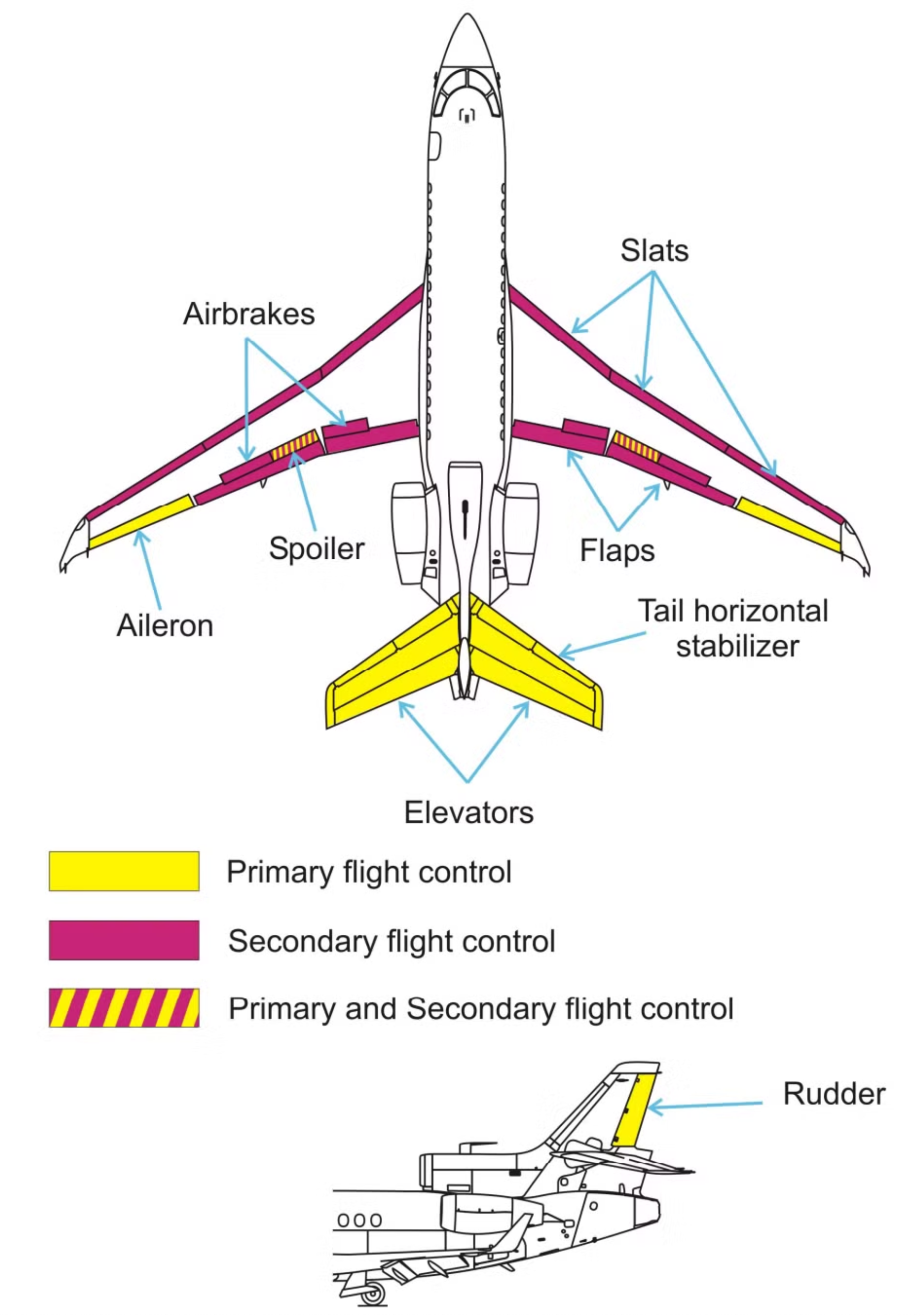Secondary Flight Controls
Jump to navigation
Jump to search

Overview
Secondary flight controls are auxiliary systems that augment the primary flight controls (ailerons, elevators, and rudder) to improve aircraft performance and reduce pilot workload. These include devices like flaps, slats, spoilers, and trim systems.
What are Secondary Flight Controls?
Augment Primary Controls
Secondary flight controls provide additional capabilities beyond the basic flight control surfaces (ailerons, elevators, and rudder).
Improved Performance
They enhance aircraft handling, especially during takeoff, landing, and maneuvering at different speeds.
Reduced Pilot Workload
Secondary controls, like trim systems, help pilots maintain desired flight attitudes with less effort.
Examples
- Flaps: Increase lift and drag at lower speeds for takeoff and landing.
- Slats: Similar to flaps, but located on the leading edge of the wing, delaying stall and improving low-speed handling.
- Spoilers: Reduce lift and increase drag, used for rapid descent or slowing down during landing.
- Trim Systems: Allow pilots to relieve control pressures and maintain a desired flight attitude.
History
- Early Aviation: After the Wright brothers demonstrated powered flight, early aircraft relied primarily on the primary controls (ailerons, elevators, and rudder).
- Development: As aircraft became more complex and faster, secondary controls were developed to improve performance and ease pilot workload.
- Modern Aircraft: Modern aircraft incorporate a wide range of secondary controls, including flaps, slats, spoilers, trim systems, and even variable-sweep wings. According to Wikipedia, some aircraft use trim systems to move the entire empennage.
